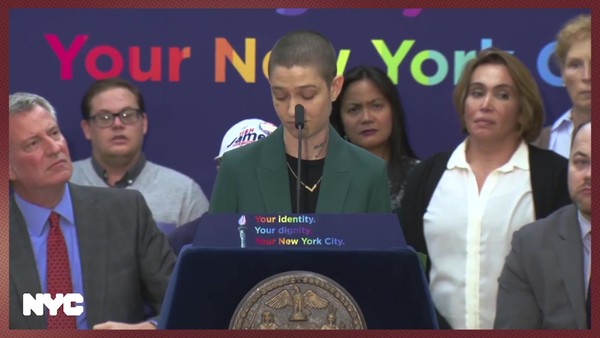Innovation > Innovation
MADE IN FUKUSHIMA. A SUSTAINABLE DECONTAMINATION METHOD FOR FARMING.
SERVICEPLAN GERMANY, Munich / METER GROUP INC / 2019
Awards:

Overview
Credits
Overview
Why is this work relevant for Innovation?
A sustainable decontamination method for farming is not a typical innovation. Because it’s not a tangible product and doesn’t contain modern technology. Rather, it’s a scientific method, combining tools and processes known for centuries in a new way. To create impact bigger than that of most technological product innovations: Contribute to solving one of the biggest ecological disasters in recent history: The Fukushima nuclear disaster.
Background
On March 11, 2011, Japan’s Fukushima Prefecture was struck by one of the biggest disasters in recent history. A tsunami, caused by an earthquake in the Pacific, hit the Fukushima Daiichi Power Plant, triggering the meltdown of the nuclear reactors, which led to explosions and radioactive material being released into the atmosphere. In the following days, wind and rain carried the radioactive material inland. More than 25,000 hectares of farmland, in what used to be one of Japan’s most important agricultural regions, were contaminated. The official decontamination method removes the fertile topsoil and replaces it with infertile dirt from the mountains, which produces huge amount of radioactive waste: 16 million m2, stored all over the region. But most importantly: By removing the fertile soil, it makes farming impossible. So even though radiation decreases, the region remains abandoned, because without farming, rural Fukushima communities lose their livelihood.
Describe the idea
Environmental technology specialists from METER, together with Dr. Masaru Mizoguchi from The University of Tokyo, fellow environmental scientists and the NPO Fukushima Saisei, have developed an innovative sustainable decontamination method for farming:
It removes the radioactive material from the soil, without removing the soil itself. The method can be easily applied by farmers themselves, because it uses only available resources. It enables farmers to grow perfectly safe rice on the fields inherited from their ancestors again. And because it removes only the radioactive particles instead of the whole topsoil, it reduces the amount of radioactive waste by 95% compared to the official method. By giving the farmers back their fields, they regain their livelihood. This revitalizes communities and business. The whole region can grow again.
What were the key dates in the development process?
1996
First METER environmental sensor installed in Fukushima Prefecture.
2011 03 11 2:46 pm
A 9.0 earthquake occurs in the Pacific.
2011 03 11
A tsunami, spawned by an earthquake in the Pacific, hits the Fukushima Daiichi power plant and causes the meltdown of the reactor cores, resulting in explosions and the release of radioactive material into the atmosphere.
2012 01
Proposal of decontamination method core idea by Dr. Masaru Mizoguchi.
2012 07
First team meeting in Iitate, Fukushima Prefecture.
2013 07
Second meeting in Iitate, testing different approaches, several scientific publications.
2014 - 2015
Several visits, refinement of method, long time analysis of soil and rice, several scientific publications.
2016 – 2019
Several visits, scaling to more fields in the region.
Describe the innovation/technology
At the core of the innovative method is the discovery that radioactive cesium binds to the clay in the rice fields: Remove the clay, and you remove the cesium. The second ‘ingredient’ of the innovation is a physical trick: Clay floats on water. By flooding the fields and stirring up the topsoil, the clay cesium compound rises to the top, from where it can be drained off into a pit next to the field, dried and stored efficiently. A single application removes 80% of the cesium from the soil, while keeping the fertile topsoil needed for farming. The rice grown on these decontaminated fields is regularly tested for radiation and found to be perfectly safe, far below the official limit, which is 10 times stricter than in the U.S. and Europe.
Because the method removes only the radioactive cesium and the clay, instead of the whole topsoil, the amount of radioactive waste is reduced by 95% compared to the official method. Farmers bury it in a distance, and because the cesium continues to bind to the clay, it won’t move in the soil and can decay safely. This eliminates the environmental and psychological impact of large nuclear waste storage sites.
Describe the expectations/outcome
The sustainable decontamination method removes 80% of the cesium in the soil with a single application.
It has been applied on many rice fields all over Fukushima Prefecture, by farmers themselves, using available resources.
The rice grown on the decontaminated fields is perfectly safe, more than 10 times below the limit of official tests for products from Fukushima Prefecture, which are the strictest radiation tests in the world. Compared with the official decontamination method, the application of the sustainable method reduces radioactive waste by 95%, prevented thousands of cubic meters of radioactive waste.
Fukushima farmers regain their livelihood, which brings back communities and economy. The method is being adopted by farmers and organizations in Fukushima and beyond.
More Entries from Applied Innovation in Innovation
24 items
More Entries from SERVICEPLAN GERMANY
24 items


